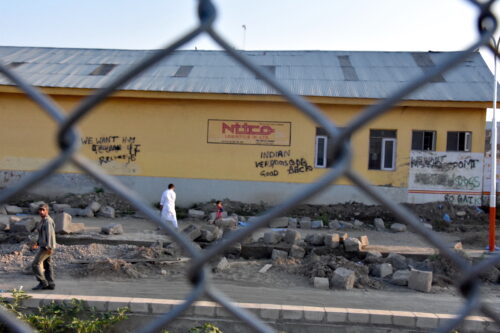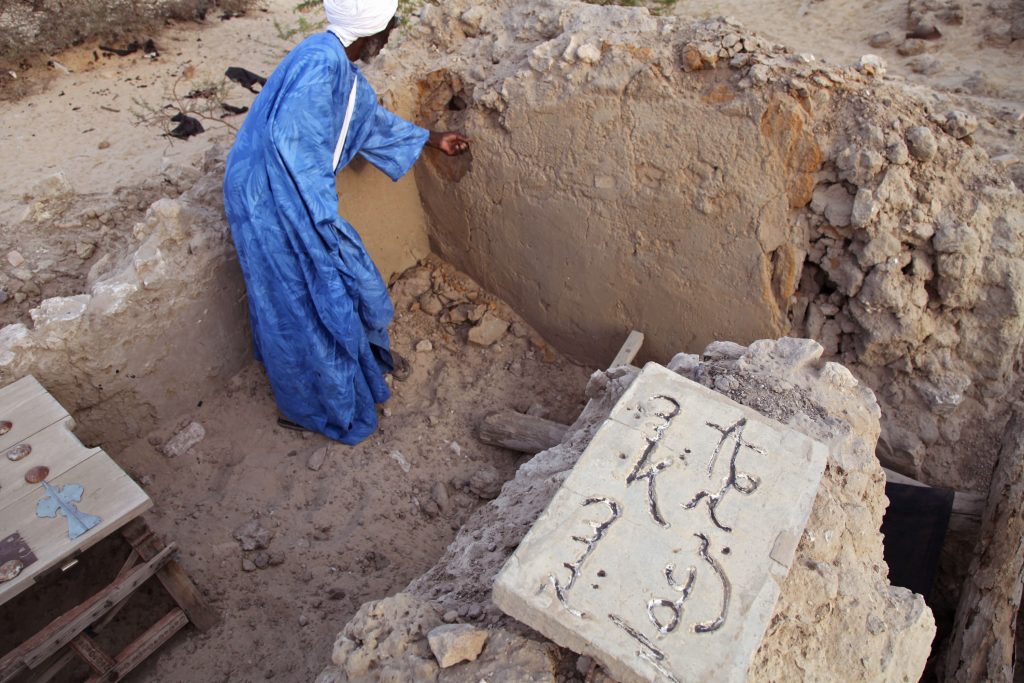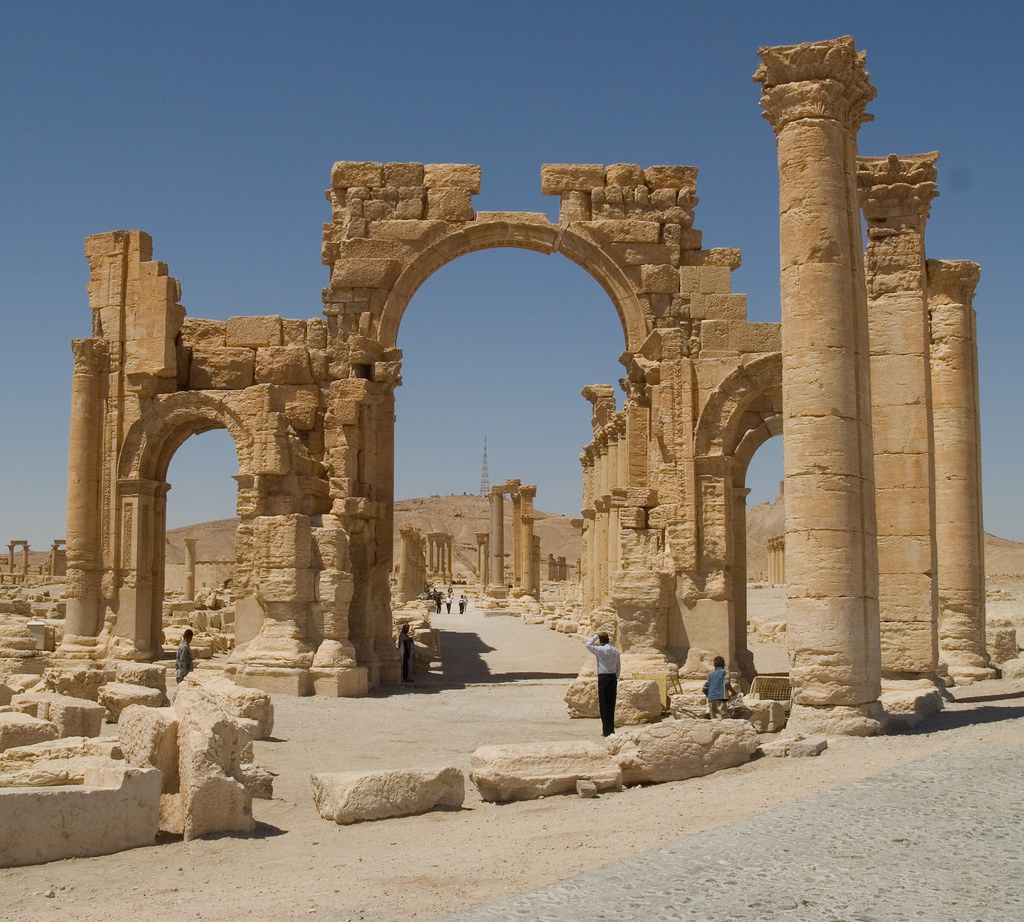The Problem With Heritage
Last week, a variety of news outlets covered the International Criminal Court’s successful prosecution of Islamic extremist Ahmad al-Faqi al-Mahdi for destroying nine historic mausoleums in 2012 at a UNESCO World Heritage site in Timbuktu, Mali, that he and his group considered totems of idolatry.
What makes this story, and others like it, newsworthy? Why does anyone care about the destruction of some ancient walls and pillars? What exactly is heritage, anyway, and when does it become a matter of grave concern?
Heritage is a property—something that is passed down from previous generations. Cultural heritage consists of the culture, values, and traditions of a particular community, group, or nation. Cultural heritage can be comprised of tangible things such as artifacts, artwork, and buildings, or intangible things, such as language, dances, and stories. Regardless of whether it is tangible or intangible, cultural heritage reflects the human aspects of our communities that shape who we are and how we interact with the world around us.
Heritage is such an important part of the human experience that the United Nations tries to safeguard it. Its 1972 Convention Concerning the Protection of the World Cultural and Natural Heritage offers broad protection, and its more specific 2007 Declaration on the Rights of Indigenous Peoples affirms that Indigenous peoples have the right to maintain, control, protect, and develop their cultural heritage, traditional knowledge, and traditional cultural expressions.
Indigenous groups have been particularly hard-hit by loss of heritage. During periods of exploration and colonization, items were collected, purchased, and stolen from Indigenous people for museums as well as institutional and private collections. Many of these items held special meaning for the group to which they belonged and were never meant to be relinquished. Yet they were sold by people who had no right to sell them. A purchaser may be able to show a bill of sale for such an object, but the right to ownership is questionable. Items stolen for their monetary value have shown up on the market in other countries. In May, for example, the Acoma Pueblo of New Mexico attempted to regain a shield being put up for bid by a Paris auction house. Although the tribe was unable to reclaim the item, it was pulled from the auction. Such cases bring into conflict the different legal systems in which the right of ownership of cultural heritage is disputed.
Heritage can also be an intensely political pawn in ongoing relations between countries. Some of the world’s most famous items of cultural heritage reside in a museum 1,500 miles from their original location. The Parthenon Sculptures—perhaps better known as the Elgin Marbles—were acquired in the early 1800s in Athens, Greece, by Lord Elgin, the British ambassador to the Ottoman Empire, and moved to England. They were later obtained by the British Museum. Each country questions the other’s right of ownership, citing not only legal issues but also moral and ethical ones. Even though there have been recent discussions about returning the sculptures to their country of origin, it is uncertain whether the sculptures will go back to Greece or whether they will remain in England.
As with the Elgin Marbles, heritage sometimes has meaning that extends beyond political borders or contemporary cultures. It can have universal value, which transcends one group or one time period, and it can be so important that its targeted destruction may be regarded as cultural genocide. News articles decried the destruction of architectural ruins at Palmyra, one of the ancient world’s major cultural centers and a UNESCO World Heritage site in Syria. When the Islamic State group (also known as ISIS) destroyed Palmyra’s 1,800-year-old Arch of Triumph and the nearly 2,000-year-old Temple of Baalshamin in 2015, the world was aghast. The case drew attention to the sense of loss that occurs when cultural heritage is purposely destroyed—in spite of The Hague’s 1954 Convention for the Protection of Cultural Property in the Event of Armed Conflict, which prohibits such attacks.
Cultural heritage professionals can identify the specific items targeted during conflicts, but we know very little about how people experience or react to the loss of heritage that is of universal significance. In 2014, the University of Pennsylvania Museum, the Smithsonian Institution, and the American Association for the Advancement of Science launched a project to study “conflict culture”—the heritage of communities attacked during periods of war or violence. More recently, a new organization, the Conflict Culture Research Network, was established to support “rigorous, interdisciplinary research that examines how conflict impacts the culture of communities experiencing violence.”
So when does heritage become a matter of grave concern? When one group uses it as a weapon against another, or possesses it when it’s important to another, or destroys it for political purposes. Every group, community, and country has objects, structures, and places that are recognized as the shared heritage of those people. That heritage should be considered sacred, and the people to whom it belongs should get to decide its fate.
In addition, some items are recognized as belonging to the shared heritage of all humanity. When one tiny minority takes it upon itself to destroy such legacies, the whole world suffers, and future generations are left with an ever-decreasing sense of the breadth and depth of our shared history.



































